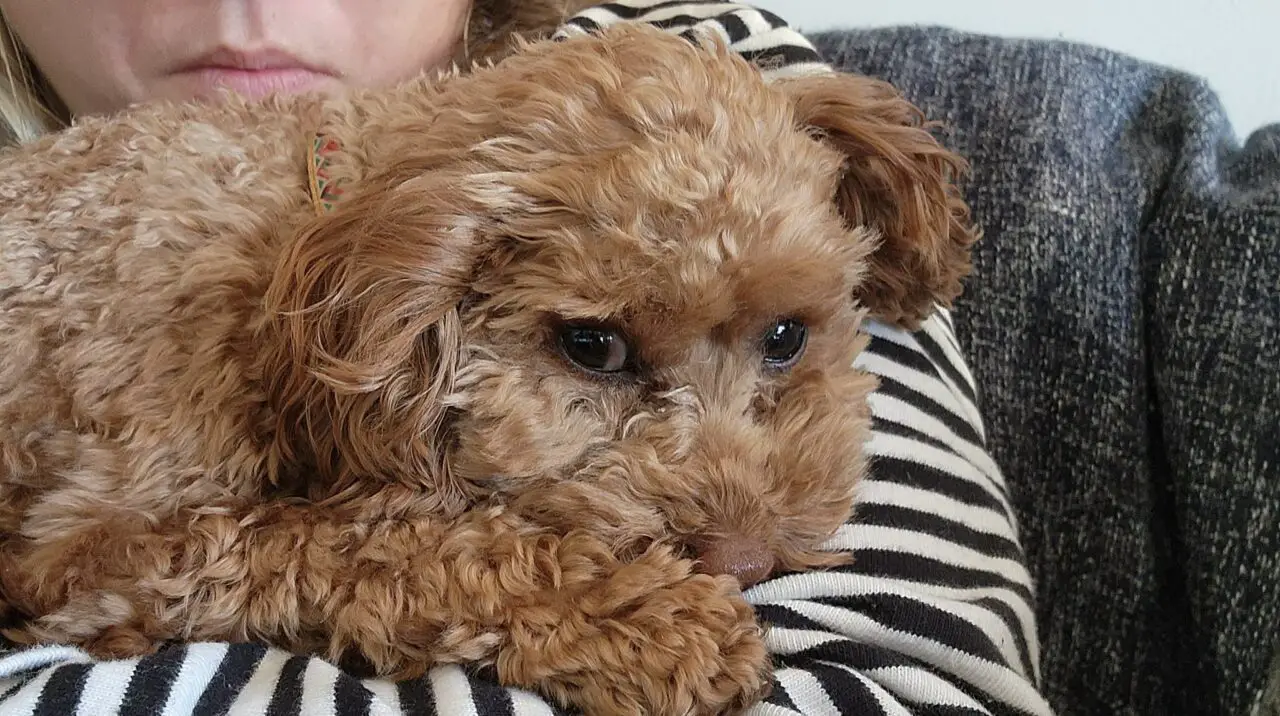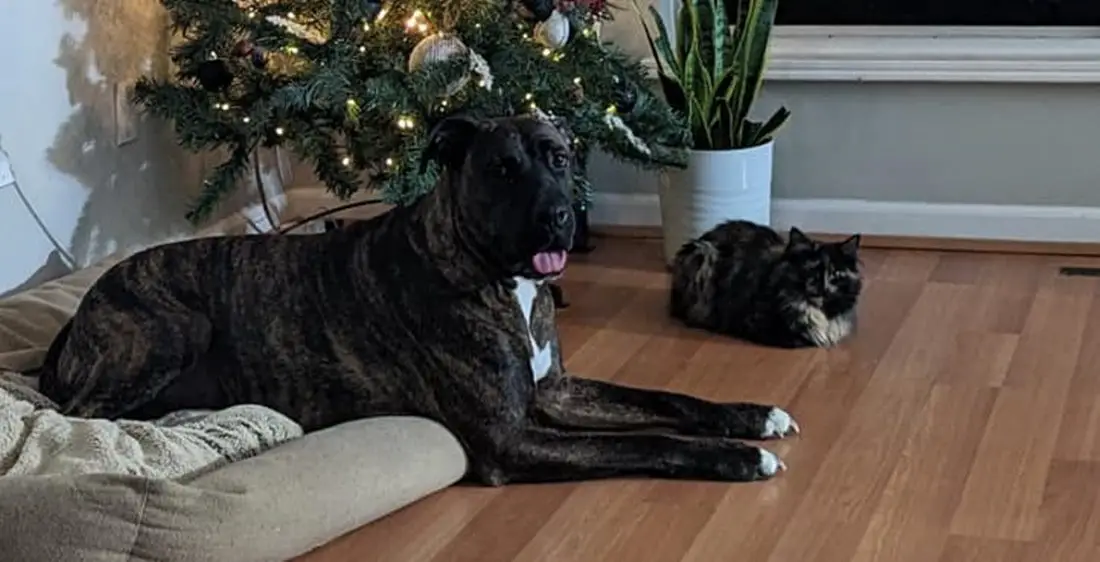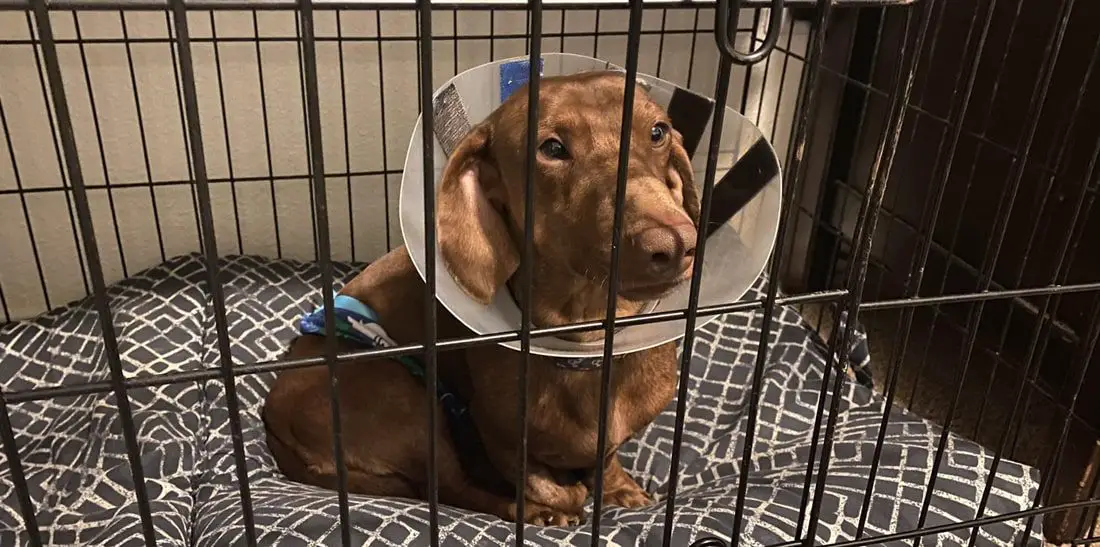One of the most difficult aspects of caring for a dog with parvo is deciding whether or not to force-feed them.
This is a tough decision, as you want to do everything possible to help your furry friend recover.
In this blog post, we will discuss the pros and cons of force-feeding a dog with parvo, and help you make the best decision for your pet!
Key Takeaway
- You should not force feed a dog with Parvo as it can lead to vomiting and further dehydration; instead, seek immediate veterinary care for appropriate treatment.
- A dog with Parvo can generally go up to a week without food, but smaller dogs are more at risk of hypoglycemia and immediate veterinary care is crucial.
- If your dog with Parvo is getting worse, you may notice increased lethargy, continued vomiting or diarrhea, loss of appetite, or worsening dehydration, all of which require immediate veterinary attention.
Should You Force Feed A Dog With Parvo
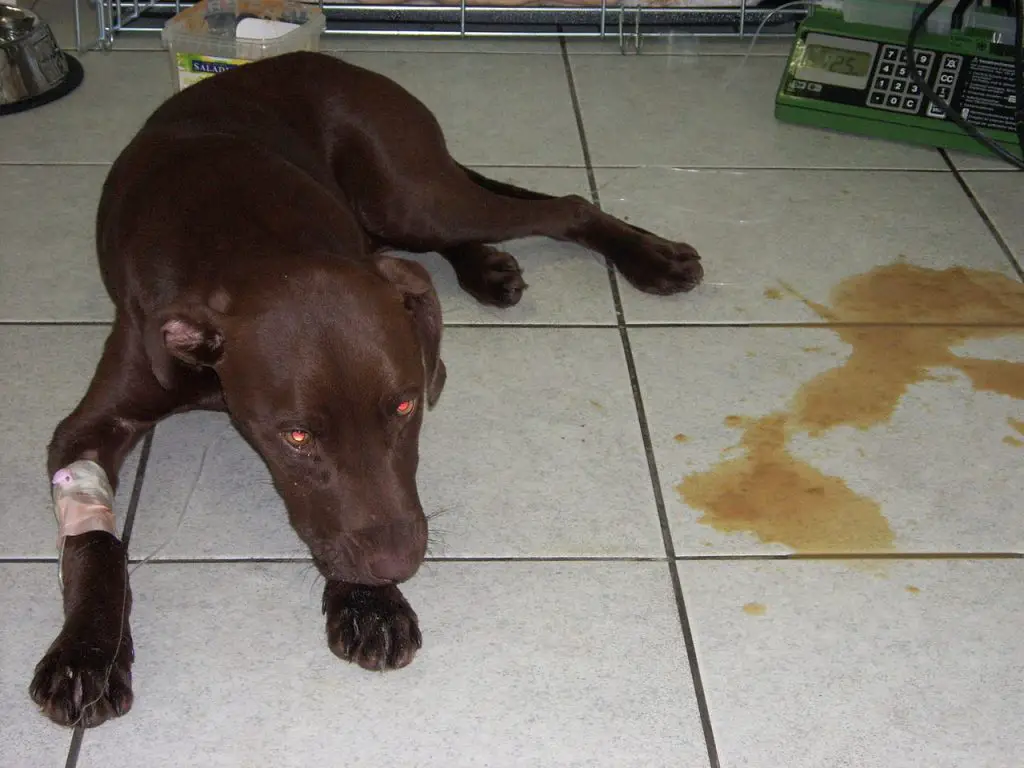
No, you should not force feed a dog with Parvo as it can lead to complications like aspiration pneumonia if food particles mistakenly enter the lungs instead of the stomach.
A dog with Parvo is in a delicate condition and needs careful handling.
Force-feeding can cause distress and potentially lead to serious problems such as aspiration pneumonia, which occurs when food particles are inhaled into the lungs rather than swallowed properly.
Instead of free feeding or giving the dog unlimited access to food, it’s crucial to monitor their intake carefully.
Offering small amounts of different foods at various times can encourage them to eat out of curiosity.
However, always remember that every dog is unique, and what works for one might not work for another.
How Long Can My Dog Go Without Eating With Parvo?
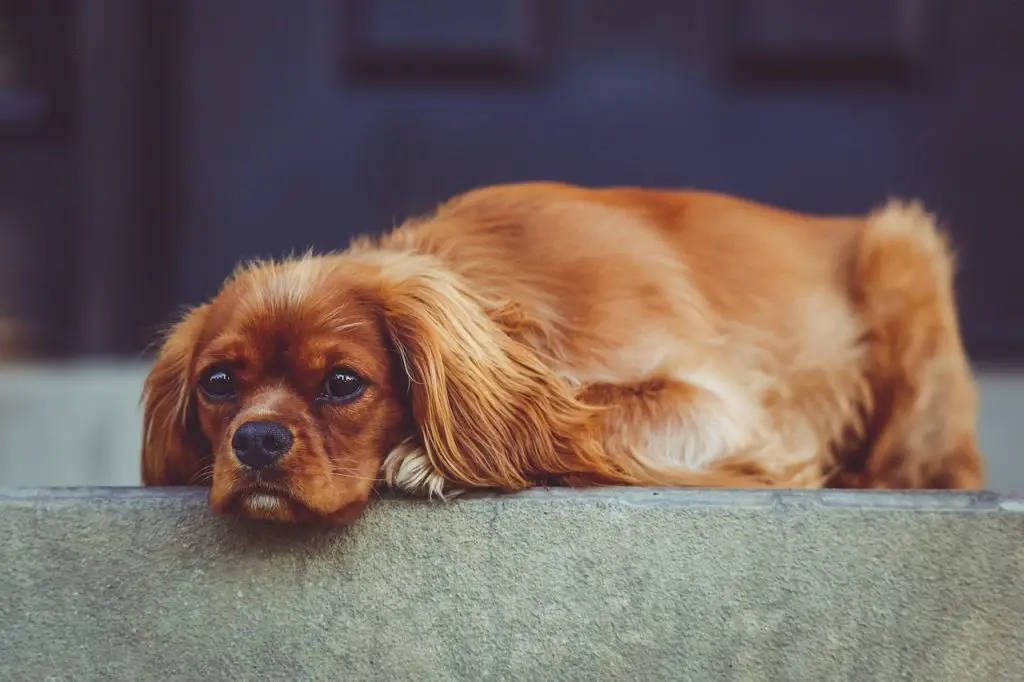
A dog with parvo can go only for a couple of days without eating. The reason is that parvo causes dogs to vomit which is usually accompanied by diarrhea, lethargy, fever, loss of appetite, and abdominal pain.
By constantly vomiting, the dog is losing a lot of fluids and it will only get worse if they don’t start eating after a couple of days.
Parvo is a highly contagious virus that affects dogs of all ages, but puppies are especially vulnerable. Parvo is spread through contact with infected feces, so it’s important to practice good hygiene and clean up your dog properly. Even if your dog is vaccinated against parvo, they can still contract the virus if they are exposed to it.
Puppies with parvo need around-the-clock care and supervision in order to ensure they are staying hydrated and getting the nutrition they need to recover. It is important to work closely with your veterinarian during this time to make sure your puppy is receiving the best possible care.
Puppies with parvo can only survive a few days without food or water before succumbing to dehydration and malnutrition. However, this timeline varies depending on the individual puppy’s health, age, and size.
While there are many factors that contribute to how long a dog with parvo can survive without food, typically dogs will need to be hospitalized and receive intensive treatment for at least three to five days.
There is no specific cure for parvo, but there are treatments available that can help ease the symptoms and give your dog the best chance of recovery. Treatment typically involves hospitalization so that your dog can be closely monitored and receive IV fluids to prevent dehydration.
How Do I Know If My Dog With Parvo Is Getting Worse?
If your dog is vomiting that persists or occurs more frequently, has diarrhea that contains blood or becomes black in color, is lethargic or depressed, has decreased appetite, has a fever, has abdominal pain, and is dehydrated, it means that the parvo is getting worse.
If you have ever seen a dog with parvo, you know how heartbreaking it can be. A dog with parvo typically looks very sick. The virus attacks the gastrointestinal system, causing severe vomiting and diarrhea.
Parvo is a virus that primarily affects dogs. It is a highly contagious disease that can be deadly if not treated promptly and properly. Early symptoms of parvo include vomiting, diarrhea, lethargy, and loss of appetite.
The worst-case scenario for a dog with parvo would be if the disease progresses to the point where it causes severe dehydration and/or organ failure. If either of these occurs, it is typically fatal for the dog.
Parvo is most commonly spread through contact with infected feces, so it is important to practice good hygiene and sanitation if you think your dog may have been exposed to the virus.
Treatment for parvo typically includes hospitalization, IV fluids, and antibiotics. With early detection and proper treatment, most dogs recover from parvo without any long-term health problems. However, some dogs may experience liver or kidney damage as a result of the virus.
Parvo is a highly contagious virus that affects dogs of all ages, but puppies are most at risk. The virus is typically spread through contact with infected feces, and it can live in the environment for months. Dogs who are not vaccinated are most susceptible to the virus says Care AH.
How Do You Hydrate a Dog With Parvo?
To hydrate a dog with Parvo, you can use oral rehydration solutions, administer subcutaneous fluids, or in severe cases, provide intravenous fluids under the supervision of a vet.
Oral Rehydration Solutions
Oral rehydration solutions are a good option for mildly dehydrated dogs. These solutions contain water and electrolytes, which can help replenish lost fluids and maintain hydration levels.
You can offer this to your dog in small amounts throughout the day. If your dog refuses to drink, you may need to use a syringe or dropper to gently squirt the solution into the side of their mouth.
Subcutaneous Fluids
For moderate dehydration, subcutaneous fluids might be necessary. This involves injecting a saline solution under the skin, usually in the shoulder blades or hip area.
The body slowly absorbs these fluids over time. However, this method should only be done by a trained professional or under their guidance as incorrect administration can lead to complications.
Intravenous Fluids
In severe cases, where the dog is severely dehydrated and unable to keep down any fluids orally, intravenous (IV) fluids may be necessary.
This involves inserting a needle into a vein and infusing fluid directly into the bloodstream. It’s the fastest and most effective way to rehydrate a severely ill dog. However, this method requires hospitalization and constant monitoring by veterinary professionals.
How Do I Feed My Dog With Parvo?
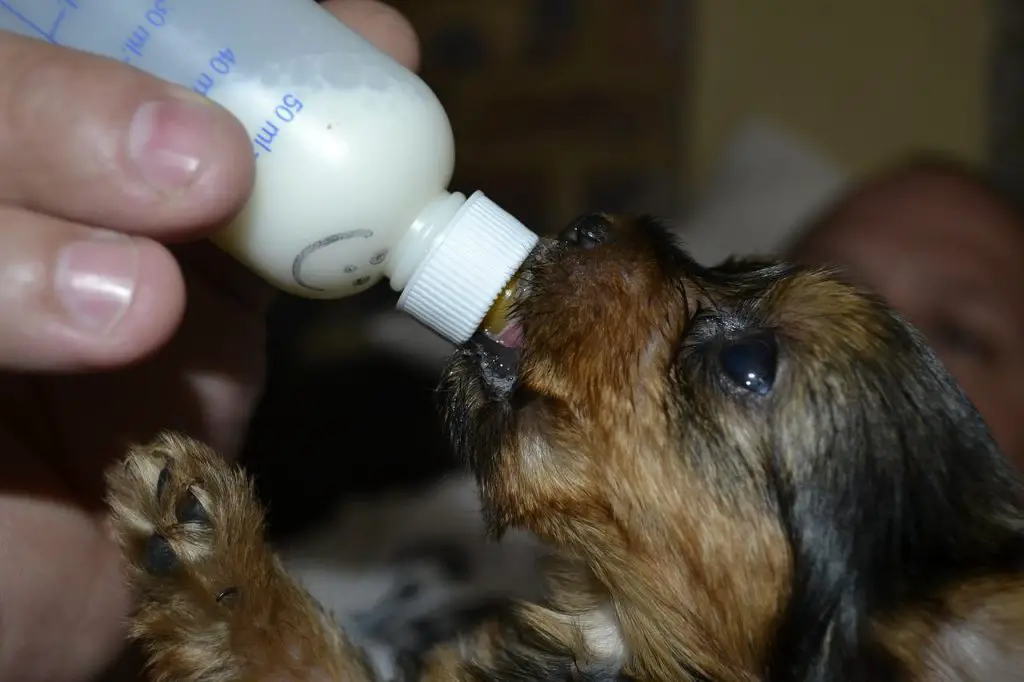
Feeding a dog with Parvo involves offering small, easily digestible meals and monitoring their intake to avoid overfeeding.
Small, Frequent Meals
One of the most effective ways to feed a dog with Parvo is to offer them small, frequent meals throughout the day. This can help maintain their energy levels and prevent them from becoming overly full, which can exacerbate symptoms such as vomiting and diarrhea.
The meals should be small enough that they don’t overwhelm the dog’s digestive system but frequent enough to provide continuous nourishment.
Easily Digestible Foods
Dogs with Parvo often struggle with digestive issues, so it’s essential to provide them with foods that are easy to digest. This could include boiled chicken, rice, or special prescription diets recommended by your vet. These foods are gentle on the stomach and can help aid in recovery.
Monitoring Intake
It’s crucial to closely monitor your dog’s food intake when they have Parvo. Overfeeding can lead to further gastrointestinal upset, while underfeeding can delay recovery. Keep track of how much your dog is eating and report any changes to your vet.
Gradual Diet Transition
Once your dog starts showing signs of recovery, gradually transition them back to their regular diet. Start by mixing a small amount of their regular food with the bland diet, gradually increasing the amount of regular food over several days. This allows their digestive system to adjust back to their normal diet slowly.
FAQs
Q: What is Parvo?
A: Parvo, short for Canine Parvovirus, is a highly contagious viral infection that primarily affects dogs. It can be spread through direct contact with infected dogs or contaminated environments. Parvo attacks the dog’s digestive system, causing severe vomiting and diarrhea.
Q: How is Parvo Transmitted?
A: Parvo is primarily transmitted through direct contact with infected dogs or their feces. It can also be transmitted through contaminated objects, such as food and water bowls, toys, and clothing. The virus is very resilient and can survive in the environment for months.
Q: What are the Symptoms of Parvo?
A: The symptoms of parvo in dogs include severe vomiting, diarrhea (often bloody), loss of appetite, lethargy, dehydration, and fever. If you suspect your dog may have parvo, it is important to seek veterinary care immediately.
Q: How is Parvo Diagnosed?
A: Parvo can be diagnosed through a combination of physical examination, blood tests, and fecal tests. Your veterinarian may also take X-rays or conduct additional tests to evaluate the extent of the infection.
Q: How is Parvo Treated?
A: Treatment for parvo typically involves hospitalization and supportive care. This may include intravenous fluids to prevent dehydration, medications to control vomiting and diarrhea, antibiotics to prevent secondary infections and nutritional support. It is important to follow your veterinarian’s guidance and closely monitor your dog’s condition.
Q: Can Feeding a Dog with Parvo Make It Worse?
A: Yes, attempting to force feed a dog with parvo can potentially make its condition worse. Dogs with parvo often have a compromised digestive system and may not be able to tolerate food. It is best to consult with a veterinarian to determine the safest and most appropriate feeding approach for your dog.
Q: How Can I Help a Dog with Parvo Regain Its Appetite?
A: Regaining appetite may take time as the dog recovers from parvo. You can try offering small, frequent meals of easily digestible and nutritious food. Some dogs may respond to home-cooked meals or a specialized veterinary diet. Discuss with your veterinarian for specific recommendations tailored to your dog’s needs.
Q: Is It Important for a Dog with Parvo to Stay Hydrated?
A: Yes, it is crucial for a dog with parvo to stay hydrated. Vomiting and diarrhea can lead to severe dehydration, which can worsen the dog’s condition. If your dog is unable to drink or is experiencing excessive fluid loss, your veterinarian may administer intravenous fluids to maintain proper hydration.
Q: How Long Does it Take for a Dog to Recover from Parvo?
A: Mild cases may resolve within a week. More severe cases may require several weeks of treatment and supportive care. It is important to follow your veterinarian’s guidance and monitor your dog’s progress closely.
Conclusion and final thoughts
In conclusion, while force-feeding a dog with parvo may seem like a good idea to some pet owners, it is not recommended by veterinarians or animal experts.
It can further weaken the dog’s immune system and put them at risk for other health issues. Instead, providing proper supportive care, including hydration and nutrition through IV fluids or special diets, is crucial in helping a dog with parvo recover.

